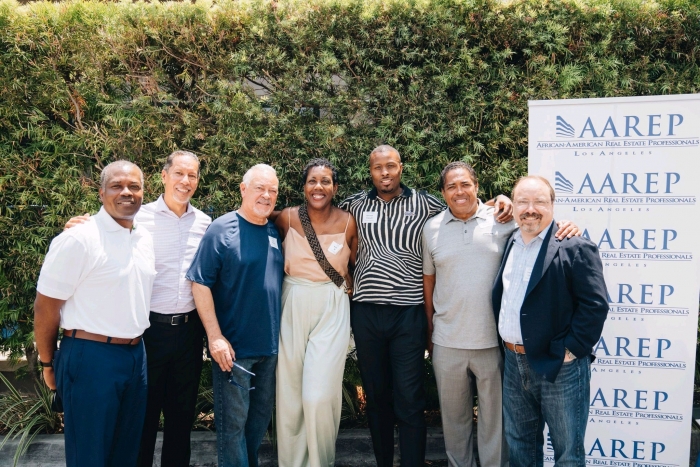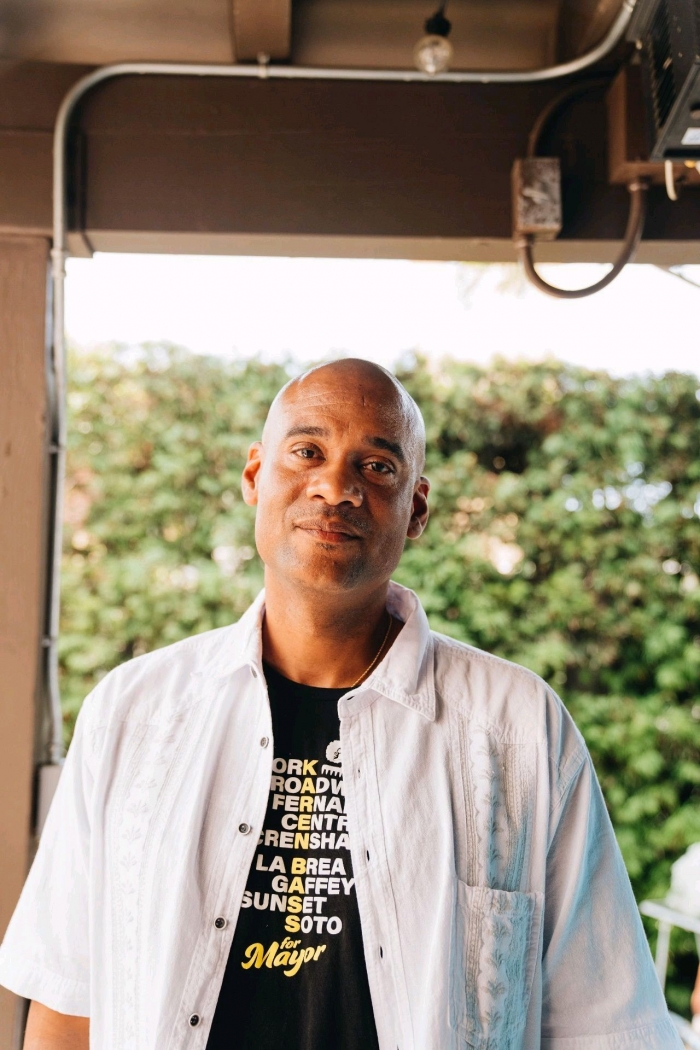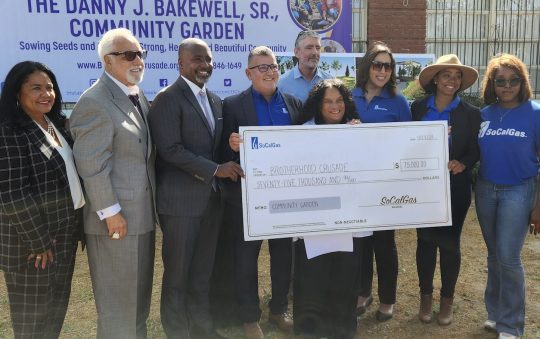
and Leandro Tyberg. (Nick Davis/ND Visuals)
On Saturday, July 23, African American Real Estate Professionals Los Angeles (AAREP LA) presented “South LA Rising: A Bus Tour and Development Project Showcase.”
The event was sponsored by the Urban Land Institute (ULI) as part of their mission to pursue unrelenting efforts to move the real estate industry toward the creation of diverse, equitable, and inclusive communities.
The event was hosted by Michael Banner, president and CEO of Los Angeles LDC, Inc. and ULI Americas Executive Committee member. Banner was joined by Michael Tidwell of Cushman & Wakefield as moderator.
AAREP LA members experienced a one-of-a-kind presentation of South Los Angeles development projects by the organization’s partner/sponsors. The sites on the tour represented retail, industrial, and affordable housing properties in the Crenshaw district, Vermont corridor, and Watts community.
Participants heard from industry veterans including Curtis Fralin, Sticks Holdings; Leandro Tyberg, PrimestorDevelopment; Sam Hughes, Economic Resources Corporation (ERC); Joe Rouzan, Vermont Slauson Economic Development Corporation (VSEDC), and Van Scott, BRIDGE Housing. Topics discussed included the process of land acquisitions, underwriting strategies, the impact of development on communities of color, the effects of COVID-19 and more.
“An expanded investor pool is flooding capital into Los Angeles beyond Westside markets. South Los Angeles is seizing the interests of global investors who seek considerable returns in submarket communities,” shared Tidwell.

In the Baldwin Hills/Crenshaw area, participants heard from Fralin of Sticks Holdings about projects with historical significance. The tour continued exploring the expanse of the Vermont commercial corridor starting with a visit to the signature project of VSEDC, where Rouzan discussed the impact of the nonprofit’s projects on the community including the new Best Buy Teen Tech Center.
Participants also visited four acres of revitalized land at Vermont and Manchester that were destroyed during the 1992 Los Angeles uprising. According to Scott, the property was left vacant for 30 years until BRIDGE Housing broke ground on a 180-unit affordable housing complex. Tyberg discussed how Primestor Development reimagined the space as Evermont, a new 40,000-square-foot mixed-use development.
The final leg of the tour featured the historic community of Watts, where participants witnessed the resilience and renewal of an area as evidenced by Primestor’s mixed-use commercial project, Freedom Plaza; and Bridge Housing’s thoughtfully designed residential community, Park Place at Jordon Downs. In the first three housing phases totaling 330 units and the 115,000 square feet grocery store anchored shopping center, BRIDGE Housing, Primestor and other interests more than doubled the number of local hire and minority/underrepresented subcontractors working on the construction sites. The organizations continue to strategize ways to continue this success throughout the completion of the Jordan Downs master development.
“The community involvement and engagement at Jordan Downs will help to ensure that this transformational master plan development will meet the needs of Jordan Downs and the greater Watts community. BRIDGE Housing is not only building quality affordable and market-rate rental and homeownership housing but working with general contractors to provide local construction jobs and business opportunities to people in Watts and the surrounding community,” commented Scott.
To round out the tour, Hughes provided context about Economic Resources Corporation’s industrial project that has generated millions in revenue for the area since its founding after the Watts uprising over 50 years ago.

The overwhelming response from the inaugural showcase tour participants was echoed in the sentiments of Marlenia Myers of NP Visions “As a native of South Los Angeles and AAREP LA member, I was heartened that the landscape in my community is finally in the hands of conscious developers who keep the people and their needs top of mind. Our community is often defined for its challenges but should be revered for its resilience.”
The day concluded with the organization’s Annual Networking Brunch sponsored by OneUnited Bank, the nation’s largest Black-owned bank. Keynote speaker and entrepreneurial activist Karim Webb summed up the experience with a discussion around removing barriers to ownership and entrepreneurism to close the wealth gap.







